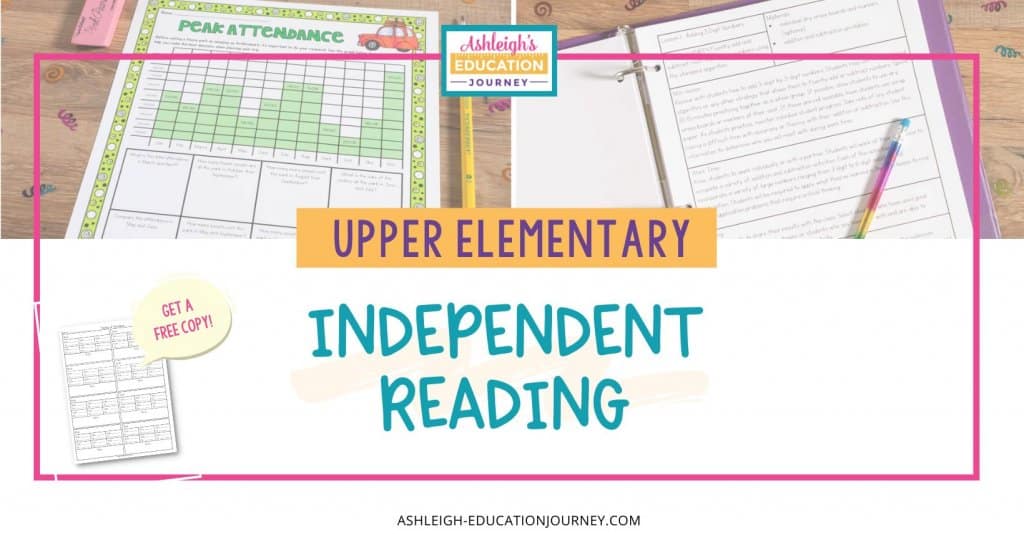
Independent reading plays an important role in the upper elementary classroom. My entire teaching career, I’ve known nothing but reading workshop and guided reading. I’ve never had a reading series to use, so I’ve spent an absurd amount of time researching and testing various reading resources, so I could implement that best strategies and practices for my students. Over the years, my instruction has evolved to meet the needs of different groups of students and to reflect current “best practices”. However, one thing that has remained constant in all 15 years is a dedicated time for independent reading. I always assumed this was common in every school and classroom. At least until I read an article on Cult of Pedagogy on How to Kill the Love of Reading. The post opened my eyes to the fact that a dedicated independent reading time was not quite a common as I thought it was. So, I wanted to share how and why I incorporate daily independent reading into my classroom.
Reading for enjoyment should not be treated as an afterthought or something “extra” students can do if they finish their work early. Students will never develop a love of reading if every time they read, they are required to do a reading-related activity afterward. Reading for pleasure outside of school has real and long-lasting benefits. The amount of reading done outside of school has consistently been found to relate to growth in vocabulary, reading comprehension, verbal fluency, and general information. Students who read independently become better readers, score higher on achievement tests in all subject areas, and have greater content knowledge than those who do not.
Browse this post:

Book Vs. Computer
There are MANY excellent computer programs to assist in reading instruction, and in no way do I believe the programs are bad. In fact, I thoroughly enjoy using Read Theory in my own classroom, and my students love it too. However, I do not use any computer program to replace independent reading time. Instead, I use them in addition to our independent reading time. I’ve never seen a child get completely lost in a computer program, but I’ve seen it more than once with a book. The way students read a passage on a computer is different from the way they read in a book. If our students are reading just so they can move on to the next level or to earn more game time, they’re motivated by extrinsic rewards. If we teach that the only purpose for reading is to accomplish a task or to increase our reading level, we’re not building lifelong readers.
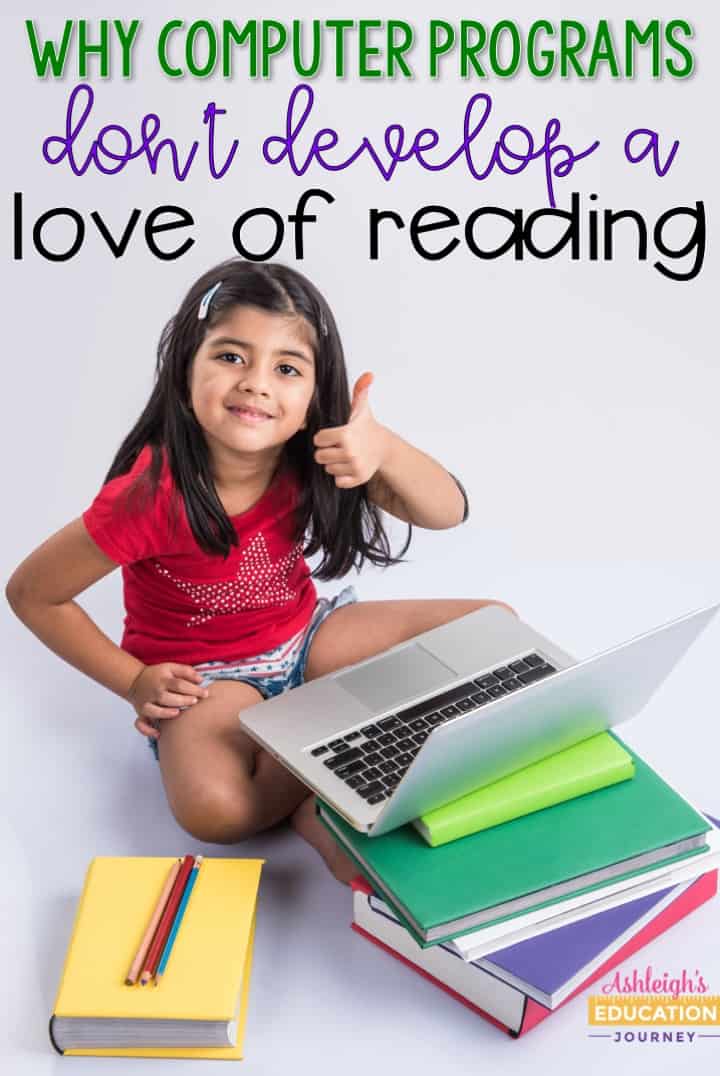

To Level or Not to Level
There has recently been a lot of debate on whether or not to level students or to require students to read on their independent reading level. As with most issues, I like to find a happy balance. It is incredibly important to allow students to select their own books or text for their independent reading time. When you let kids choose what they read, they are more willing to take risks and try new authors and genres.
During independent reading there are times when I encourage students to break away from reading ruts. I often do this by asking students to alternate between what they typically reading (usually graphic novels) with something new and different. It’s important to never underestimate the value of a informal conversation about books. When you let kids choose what they read, they will read more, because reading is no longer a chore. Giving students choice empowers our students.
However, children with difficulties in reading often do not read independently, because they tend to find reading challenging and troublesome. These students may have a negative attitude toward reading because of repeated failure. These are students who will want to use the restroom during, select a new book, ask to go to the library, or more or less anything that will allow them to escape reading time. Nevertheless, encouraging independent reading for pleasure with these students is important for developing positive habits of reading. Be sure to help children find books that they will enjoy, such as books on topics that interest them, different book series, or books by a favorite author.
It’s also important to make sure the students are not choosing books that are too difficult. Struggling readers will often pick a book that is too hard to look like they are reading like their classmates. However, optimal learning and enjoyment occur when the book is at the right level of difficulty for the child. Children should be able to read at least 95% of the words in a text accurately. Otherwise, the book is too difficult for independent reading. If I have a student who wants to read particular book that is too hard for them at the time, I may download an audio version of the book for them to read along with. Upper elementary struggling readers usually resist books that appear “babyish” so, I try to find books that appear to be for older students, but are still easy to read. One of my favorites are High Noon Books.
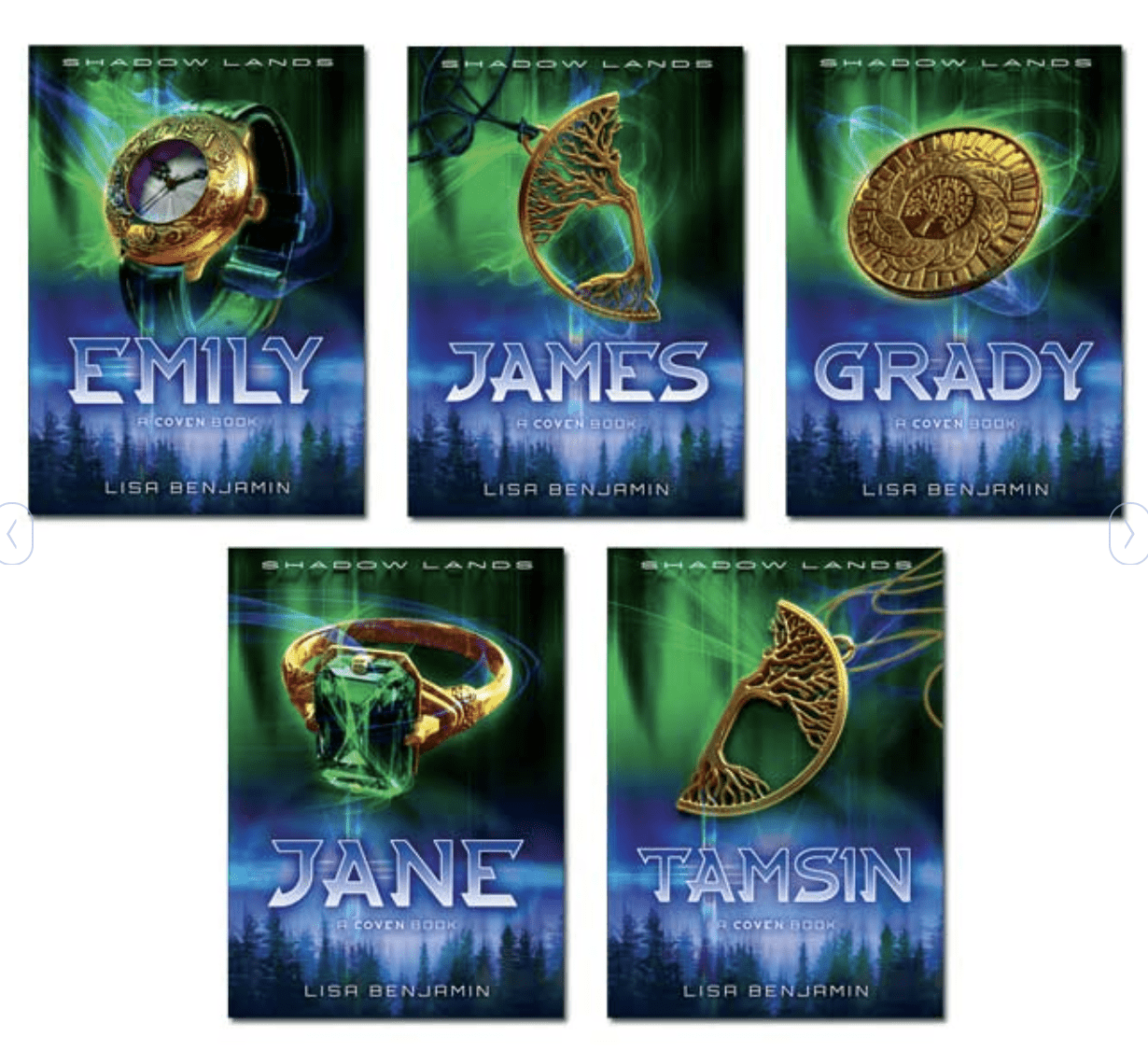
I do level my students at the beginning of the year, so I can monitor their reading growth, but I don’t let that level define my students. Since I teacher upper elementary, I do want my students to take into account of their reading level for the main purpose of I want students to be able to read and comprehend the books they choose. I also know that students can often successfully read books at more than one level. If a child has a lot of background knowledge on a particular topic, s/he can typically read books about that topic that are above their reading level.
I have many students who are reading above grade level, and I do not require those students to read on their level. Once a student reaches a certain point, I more or less let them choose anything they want to read. It’s my personal belief that just because a student can read a book, doesn’t mean s/he should read the book. For example, when I think about the book Hunger Games, I know I have many students who could easily read and comprehend the text, but their maturity level isn’t there yet. We have to be just as careful with our advance readers as with our struggling readers. There is nothing wrong with a student who can read at a high school level curling up with a copy of Charlotte’s Web. Students shouldn’t miss out on classics, because the books are at the wrong reading level. These readers can be challenged in more ways than increasing their reading levels. I like to group similar readers have have them participate in reading clubs or literature where they discuss the text in depth.

Activities & Centers and Independent Reading
Naturally, independent reading can’t be the only component of reading instruction. There should also be lessons, reading activities and/or practice, and reading groups. We don’t have to have an all-or-nothing approach, which can be all too common in education. While reading centers and task cards can be an amazing instructional strategy, they do not replace time with actual books. These reading-related activities can certainly serve a purpose (I use them), but we still need to place a priority on independent reading. I’ve found that if I don’t have something scheduled, it doesn’t happen. When I had a longer reading block, I could incorporate independent reading time and centers into my instruction. I had 80 minutes for reading, so I had a 20 minute reading lesson, and three 20 minute rotations: one for independent reading, one for reading groups, and one for a center activity. However, due to time and scheduling challenges, I now only have about 50 minutes for reading, so I have changed what I do during my reading block. I now alternate lessons and activities, where I teach a mini lesson one day and follow up with task cards or an activity the following day. I’m doing everything I can to preserve my reading groups and independent reading time. When my students are in their reading groups, I don’t count that as independent reading, because this is when my students are reading a teacher selected text and/or are focusing on various reading strategies.
I love using this Status of the Class form to keep track of what my students are reading during their independent reading time. Once a week, I meet with students to discuss what they are reading and their feelings about the book. I keep that information on this form, which gives me an overview of what types and genres of books students are reading. It also lets me see how long students spend on a particular book. If a student abandons a book, I’ll write why s/he abandoned the book, and we’ll work together to select a book that hopefully the student will stick with. You can download the form here!
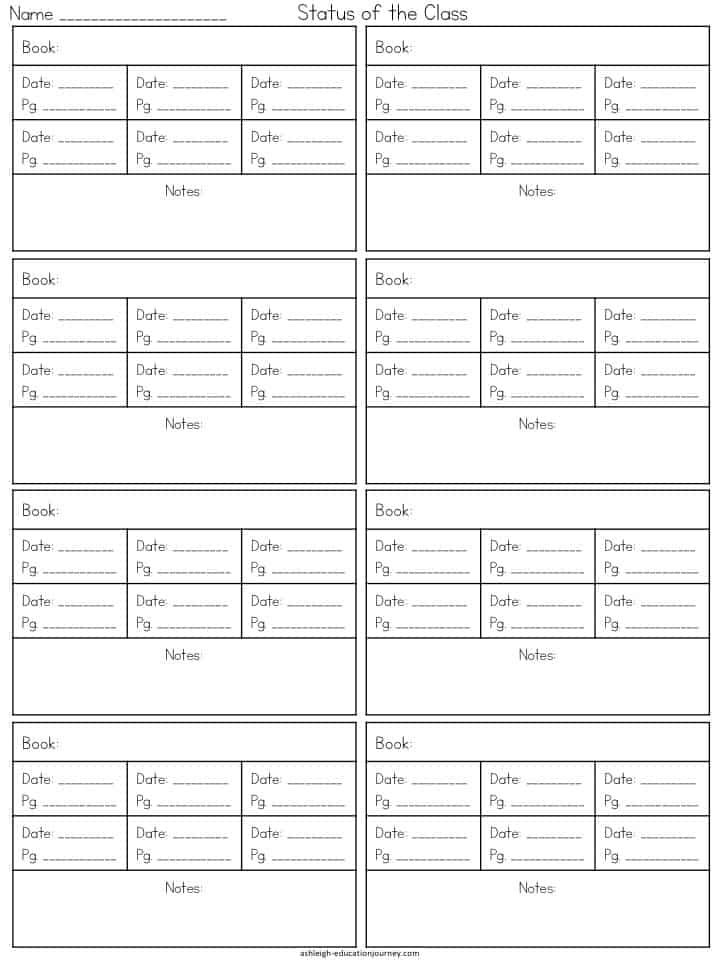

Classroom Library for Independent Reading
To have a successful independent reading time, it’s important to have a robust classroom library. There are some schools of thought that say bigger is better. However, I’ve found that too many books can be a bit overwhelming for students. I keep some books organized by level. This is probably the least used section of my classroom library.
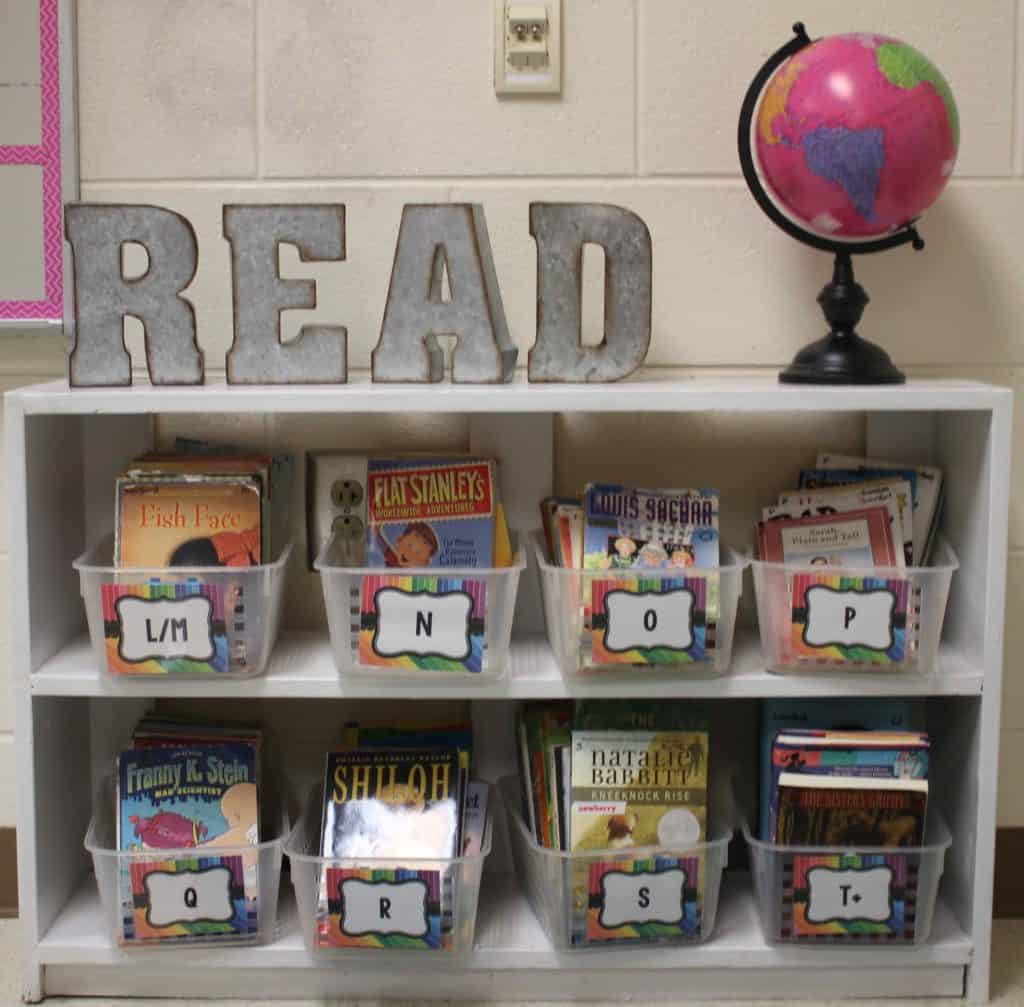
I also organize books by author. I love Christopher Paul Curtis, Kate DiCamillo, Andrew Clements, and so many more! In my classroom, I also have books organized by genre with historical fiction, graphic novels, fantasy, biographies, etc. By far, the most popular books are my series books. Some of my students’ favorites are: Harry Potter, Diary of a Wimpy Kid, Land of Stories, I Survived, Geronimo Stilton, 39 Clues, and Who Would Win books.
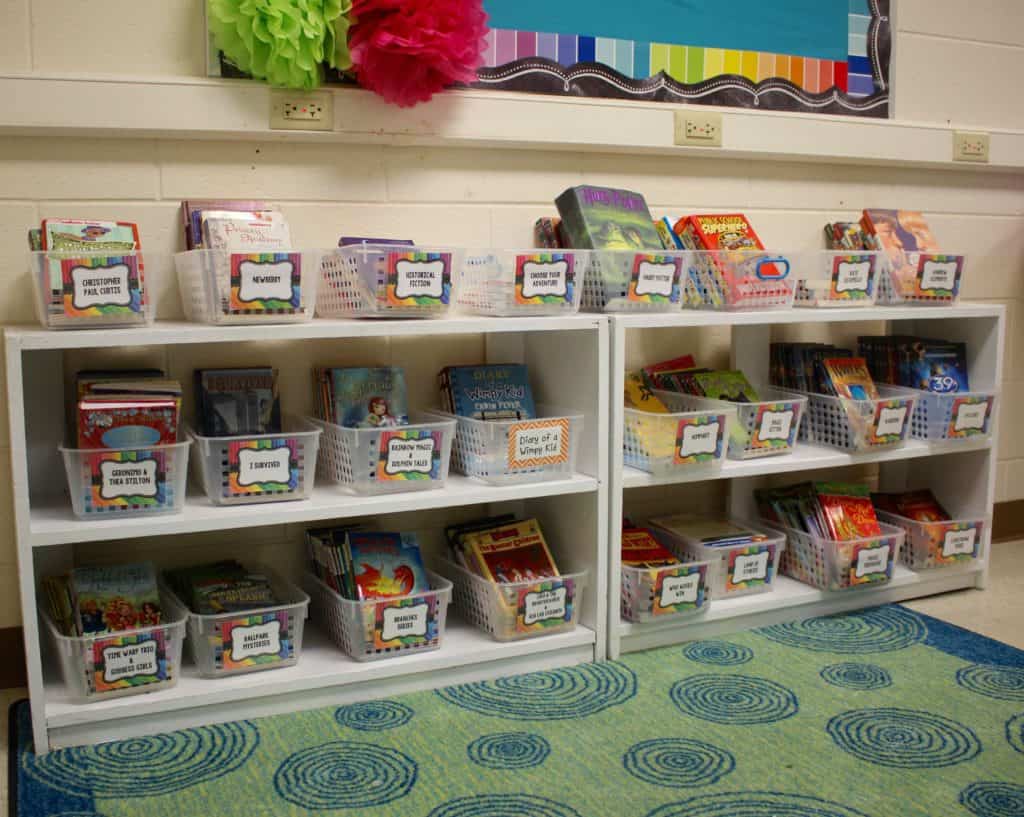
I do have student get in “reading ruts”, and they keep reading the same thing without branching out. I’ve found that the BEST way to get students to read something new is to read a chapter or two aloud to the class. I’ll hook students on a book, and then they can’t wait to finish it during their independent reading time.
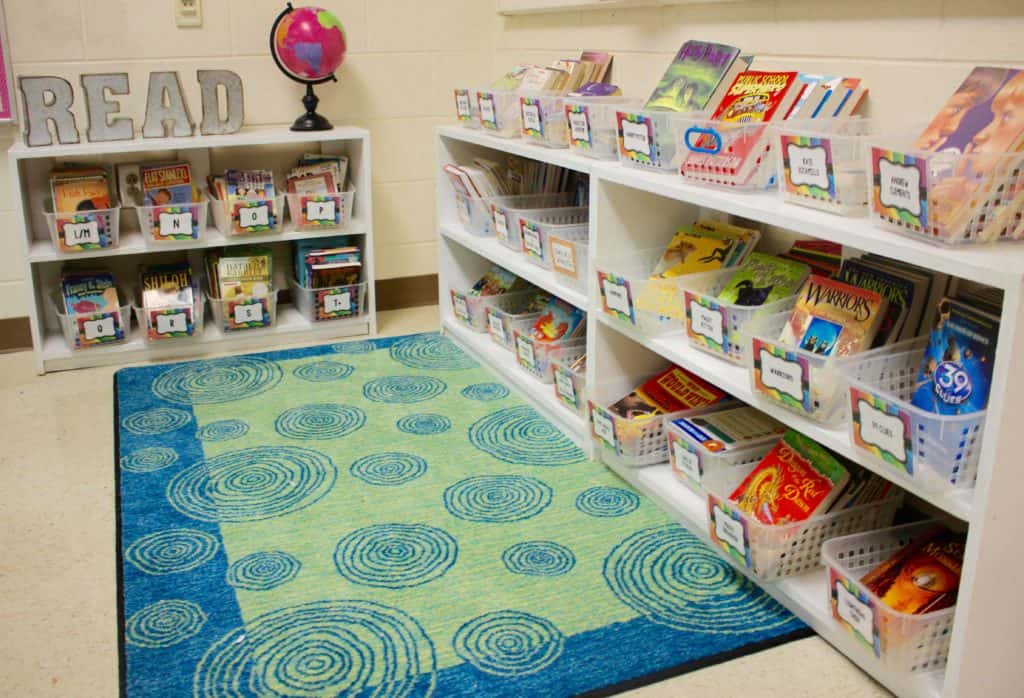



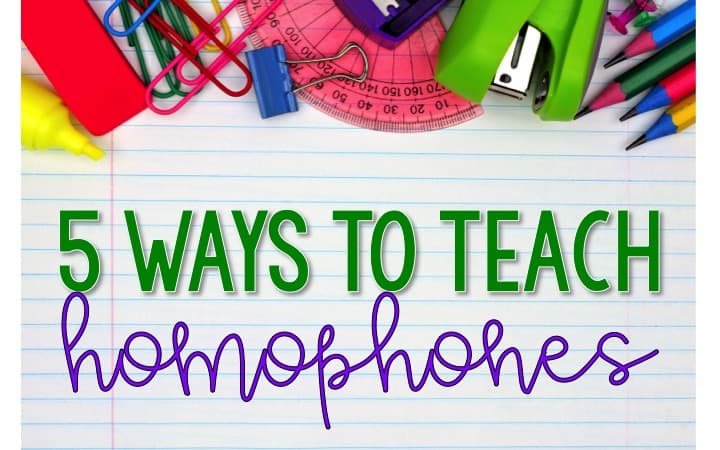
Good commentary on leveled reading! Thanks for the resource of High Noon Books.
I agree with you . I taught 5th for 17 years and moved to 4th last year. I have always implemented similar reading requirements and would never give up independent reading time. I tell my kids it’s just as important as math, spelling, writing or anything else we do. Very few students read at home by this age there are just to many distractions and parents believe they can read so they don’t push it like they do in grades 1-3. In all my years my students grow 2-3 grade levels in reading and finally find they love to read. Good readers make good writers and it helps in every other subject. I don’t understand why you wouldn’t put time and effort into something that is proven to improve students in every subject area. And PS I don’t have a student library in my room and nobody leaves or looses their library books.